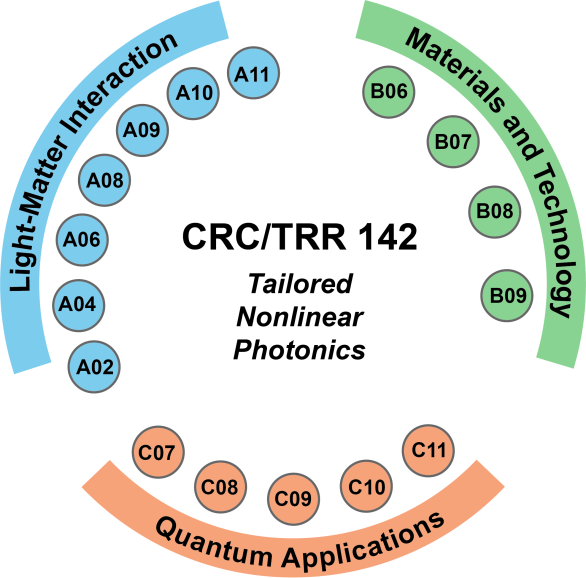News
12.05.2016

Von grundlegenden Konzepten zu funktionellen Strukturen
Unser Ziel ist die Erforschung, Entwicklung und Konstruktion nichtlinearer Photoniksysteme. Wir nutzen modernste technologische Möglichkeiten für die Erforschung neuer physikalischer Eigenschaften und Geräte, die auf maßgeschneiderten starken Nichtlinearitäten und echten Quanteneffekten basieren.
Wir wollen nichtlineare optische und Quanteneffekte aus dem Stadium der physikalischen Grundlagenforschung in die Anwendung bringen.

Das Forschungsprogramm des SFB/Transregio 142 verbindet die Kernkompetenzen der Universität Paderborn in den Bereichen photonische Materialien, Festkörpertechnologie, Quantenoptik und Theorie mit denen der TU Dortmund in der nichtlinearen Spektroskopie und Instrumentierung. Es konzentriert sich auf das Maßschneidern nichtlinearer Wechselwirkungen wie Frequenzumwandlungsprozesse, die Kontrolle von Quantensystemen, Lichtemission und -ausbreitung sowie Nichtlinearitäten auf der Einzelphotonen-Ebene.
Projektbereich A: Licht-Materie-Wechselwirkung
Chancengerechtigkeit und die gezielte Förderung von weiblichen Forschenden haben im TRR 142 seit jeher einen hohen Stellenwert.
Wir ermutigen wissbegierige Nachwuchskräfte, schon möglichst früh Erfahrungen auf wissenschaftlichen Konferenzen zu sammeln. Mit dem TRR 142-Travel Grant Scheme haben bereits Studentinnen im Bachelor- und Masterstudium die Chance, erste Schritte im akademischen Umfeld zu gehen.
Und mit einem passgenauen Empowerment-Coaching unterstützen wir gezielt unsere Doktorandinnen und weiblichen PostDocs.
Der internationale Workshop PHOTONICS FUTURE. Profound | Equal | Inclusive bietet darüber hinaus den jungen weiblichen und den männlichen TRR 142-Forschenden die Gelegenheit, mit renommierten Wissenschaftlerinnen Fachliches zu diskutieren und gleichzeitig von deren Karrierewegen zu lernen.